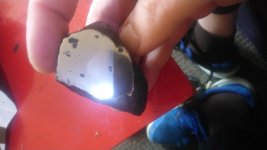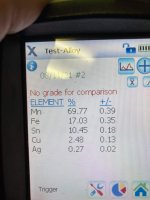inhochsignovinces
Tenderfoot
- Jul 22, 2021
- 6
- 0
- Primary Interest:
- All Treasure Hunting
i found this while metal detecting on a plough field. Very heavy , slighlty attracted to magnet, possible fusion crust on top, metalic. No widmanstatten pattern at etching with feric chloride . I'm confuse now






